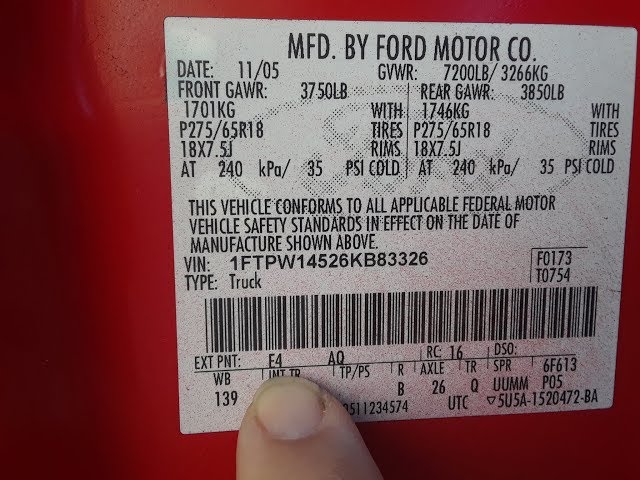Decoding Colors: A Comprehensive Guide on How to Find Your Paint Code on Your Car Quickly

Introduction
Whether you’re looking to touch up a minor scratch, perform a DIY paint job, or simply curious about the exact color of your car, knowing how to find your paint code is essential. This comprehensive guide will walk you through the steps on how to locate your car’s paint code swiftly, providing you with the information needed to match and replicate your vehicle’s color accurately.
Understanding the Importance of Paint Codes
Car manufacturers use specific paint codes to identify the exact color of a vehicle. These codes, often alphanumeric sequences, help ensure consistency in color across different production batches. Locating your car’s paint code is crucial when ordering touch-up paint or seeking professional painting services, as it ensures a precise match to the original color.
- Consult Your Owner’s Manual: Start by checking your car’s owner’s manual. Manufacturers often include important information, including the paint code, in the manual. The section on vehicle specifications or color codes is a good place to begin your search.
- Check the Driver’s Side Door Jamb: One of the most common locations for the paint code is on the driver’s side door jamb. Open the driver’s side door and inspect the area where the door latches to the car’s body. Look for a sticker or label that includes various information about your vehicle, including the paint code.
- Look Under the Hood: Another location where manufacturers often place important information is under the hood. Open the hood of your car and inspect the firewall – the metal panel between the engine compartment and the passenger compartment. Look for a sticker or label containing details about your vehicle, including the paint code.
- Search the Glove Compartment: Some car manufacturers provide a paint code label inside the glove compartment. Check the owner’s manual storage area, the back panel of the glove compartment, or inside the door of the glove compartment for a label containing the paint code.
- Examine the Trunk Area: For vehicles with a trunk, check inside the trunk area. Lift the trunk lid and inspect the underside of the lid, the edges, or the area surrounding the spare tire compartment. Some manufacturers place the paint code label in these locations.
- Use Online Resources: If you cannot locate the paint code using the methods mentioned above, consider using online resources. Many car manufacturers provide online tools or databases where you can input your vehicle’s information to retrieve the paint code. Check the official website of your car’s manufacturer for such tools.
- Contact the Dealership: If all else fails, contact the dealership where you purchased the vehicle or a dealership associated with your car’s brand. The dealership’s service department can often assist you in obtaining the paint code based on your vehicle’s identification number (VIN).
- VIN Decoding Services: Several online services specialize in decoding VINs and providing detailed information about your vehicle, including the paint code. Input your VIN into one of these services to retrieve the paint code along with other relevant details about your car.
- Mobile Apps and Color Matching Tools: Some mobile apps and color matching tools allow you to identify your car’s paint code by taking a photo of your vehicle. These tools use advanced color-matching algorithms to analyze the image and provide you with the corresponding paint code.
- Professional Assistance: If you are still unable to find the paint code or are uncertain about the accuracy of the code you’ve located, consider seeking professional assistance. Auto body shops and paint specialists have the expertise and resources to accurately identify your car’s paint code.
Conclusion
Finding your car’s paint code is a straightforward yet crucial task, especially when it comes to maintaining or restoring the aesthetic appeal of your vehicle. By exploring the common locations mentioned in this guide, utilizing online resources, or seeking assistance from professionals, you can quickly and accurately identify the paint code for your car. Whether you’re embarking on a DIY painting project or simply want to ensure a precise color match for touch-ups, having access to your car’s paint code is the key to achieving the desired results.







